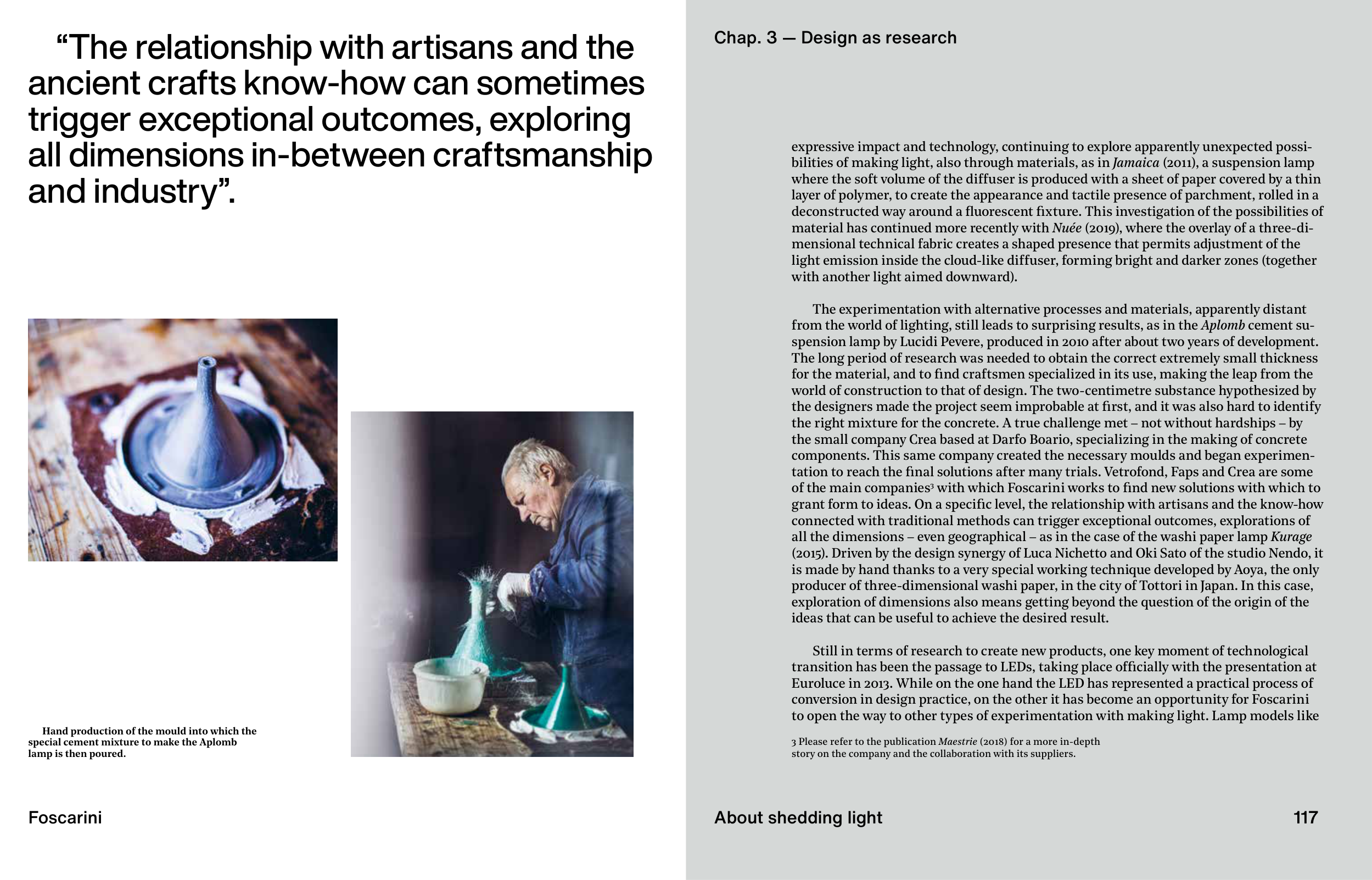Foscarini
117
“The relationship with artisans and the
ancient crafts know-how can sometimes
trigger exceptional outcomes, exploring
all dimensions in-between craftsmanship
and industry”.
Hand production of the mould into which the
special cement mixture to make the Aplomb
lamp is then poured.
About shedding light
Chap. 3 — Design as research
expressive impact and technology, continuing to explore apparently unexpected possi-
bilities of making light, also through materials, as in Jamaica (2011), a suspension lamp
where the soft volume of the diffuser is produced with a sheet of paper covered by a thin
layer of polymer, to create the appearance and tactile presence of parchment, rolled in a
deconstructed way around a fl uorescent fi xture. This investigation of the possibilities of
material has continued more recently with Nuée (2019), where the overlay of a three-di-
mensional technical fabric creates a shaped presence that permits adjustment of the
light emission inside the cloud-like diffuser, forming bright and darker zones (together
with another light aimed downward).
The experimentation with alternative processes and materials, apparently distant
from the world of lighting, still leads to surprising results, as in the Aplomb cement su-
spension lamp by Lucidi Pevere, produced in 2010 after about two years of development.
The long period of research was needed to obtain the correct extremely small thickness
for the material, and to fi nd craftsmen specialized in its use, making the leap from the
world of construction to that of design. The two-centimetre substance hypothesized by
the designers made the project seem improbable at fi rst, and it was also hard to identify
the right mixture for the concrete. A true challenge met – not without hardships – by
the small company Crea based at Darfo Boario, specializing in the making of concrete
components. This same company created the necessary moulds and began experimen-
tation to reach the fi nal solutions after many trials. Vetrofond, Faps and Crea are some
of the main companies3 with which Foscarini works to fi nd new solutions with which to
grant form to ideas. On a specifi c level, the relationship with artisans and the know-how
connected with traditional methods can trigger exceptional outcomes, explorations of
all the dimensions – even geographical – as in the case of the washi paper lamp Kurage
(2015). Driven by the design synergy of Luca Nichetto and Oki Sato of the studio Nendo, it
is made by hand thanks to a very special working technique developed by Aoya, the only
producer of three-dimensional washi paper, in the city of Tottori in Japan. In this case,
exploration of dimensions also means getting beyond the question of the origin of the
ideas that can be useful to achieve the desired result.
Still in terms of research to create new products, one key moment of technological
transition has been the passage to LEDs, taking place offi cially with the presentation at
Euroluce in 2013. While on the one hand the LED has represented a practical process of
conversion in design practice, on the other it has become an opportunity for Foscarini
to open the way to other types of experimentation with making light. Lamp models like
3 Please refer to the publication Maestrie (2018) for a more in-depth
story on the company and the collaboration with its suppliers.
117


